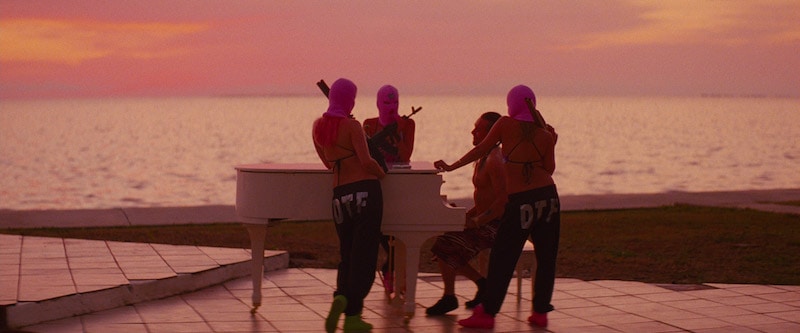Why ‘Spring Breakers’ Marked the End of the Indie Sleaze
Here’s a video essay on why Harmony Korine’s ‘Spring Breakers’ is the candy-colored punctuation mark at the end of the era of Indie Sleaze.

Welcome to The Queue — your daily distraction of curated video content sourced from across the web. Today, we’re watching a video essay that looks at what Spring Breakers can tell us about the end of indie sleaze.
If you were of a certain age in the late 2000s and early 2010s, you’re well acquainted with indie sleaze. The term describes a specific aesthetic (and way of being) that prioritized hipster hedonism in all its polaroid glory.
Indie sleaze derived its power from anti-glamor, from smudged glittery eyeshadow to torn fishnets, and all the Tumblr pseudo-grunge idealism you could dream of. And, as the video essay below argues, the era of indie sleaze ended with one clear punctuation mark: Harmony Korine’s Spring Breakers.
For those who missed the film when it premiered a decade ago (feel old yet?), Spring Breakers tells the tale of four college girls who really want to go down to Florida for spring break. One bank robbery later, the girls find themselves in a bacchanal of drinking, partying, and drugs.
Despite its showy marketing, Spring Breakers is, at the end of the day, an art-house film built more on impressionistic vibes than titillating action sequences. Its subject is the American Dream, both its corruption and the admission that maybe there’s nothing more American than drunken, debauched, freedom-enjoying teens on vacation. The film embraces everything about superficiality, never making a judgment call on the sugar rush so much as showing it for what it is.
The following video essay digs deeper into how Korine’s film marked the end of the indie sleaze era while also forwarding the crunchy idea that the film is an incredible modern example of exploitation cinema.
Watch “Spring Breakers and the End of Indie Sleaze”:
Who made this?
This video essay on how Spring Breakers signaled the end of “indie sleaze” by Broey Deschanel, a self-described “snob (and a YouTuber)” whose video essays cover everything from new releases like Licorice Pizza and Euphoria to camp classics like Showgirls. You can subscribe to their YouTube account here and you can follow them on Twitter here.
More videos like this
- For another sample of Broey Deschanel’s work, check out this video essay on Sofia Coppola‘s bad faith critics and why she’s as much an auteur as any of her male peers. Heck, friend of the column Hannah Strong even wrote a whole book about her!
- Here’s another video essay from Broey Deschanel on what Portrait of a Lady on Fire can teach us about the ever-illusive “gaze.”
- And finally, here’s Broey Deschanel’s video essay on the metatextuality of Mia Hansen-Løve’s Bergman Island.